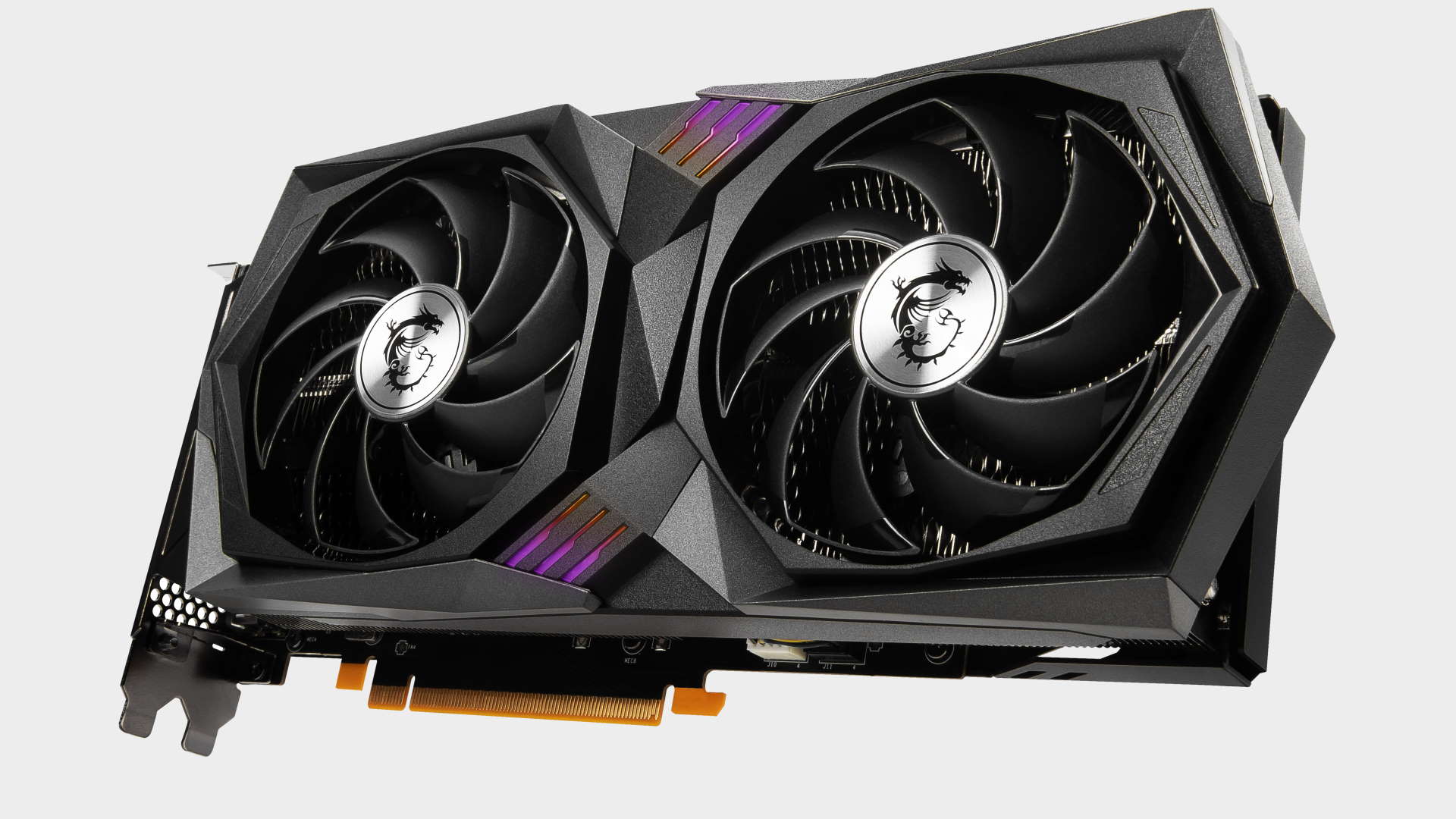Our Verdict
Though the MSI Gaming X is an example of a mid-range card done right, a true verdict only applies once the market settles.
For
- A well-balanced design for this class of GPU
- Strong Ampere feature set
- 12GB offers that little bit of future proofing
Against
- Not enough of an upgrade over its RTX 2060 predecessor
- The 3060 Ti is a better option – if you can find one
PC Gamer's got your back
The MSI RTX 3060 Gaming X has arrived at an all-too interesting time in our lives. So, let’s get the ugly part out of the way. The one-two punch combination of the global semiconductor shortage and relentless mining demand is continuing to wreak havoc on the GPU market. The Nvidia RTX 3060 is going to sell at prices well above RRP for quite some time and even then, it will be difficult to find in stock.
Nvidia has made an effort to nerf the mining performance of the card, though it's early days and it remains to be seen how effective this block will be, or indeed if it can be circumvented. It shouldn't always be like this, so rather than turn this article into a lament of the sad state of the market, lets focus more on the card itself and how it stacks up.
In six months, maybe we’ll look back and laugh. It sure beats crying.
The RTX 3060 is the first card equipped with the GA106 GPU and it’s the most affordable Ampere GPU released to date, and here we have the MSI Gaming X version on hand for review.
It’s a twin fan card that’s well suited to the thermal and power consumption characteristics of the GA106 chip. The RTX 3060 comes with 3,584 active shader units, or CUDA cores. That’s a big drop compared to the 4,864 of the GA104 based Nvidia RTX 3060 Ti.
GPU: GA106
Lithograpy: Samsung 8nm
CUDA cores: 3,584
SMs: 28
RT Cores: 28
Tensor Cores: 112
GPU Boost clock: 1,837MHz
Memory bus: 192-bit
Memory capacity: 12GB GDDR6
Memory speed: 15Gbps
Memory bandwidth: 360GB/s
TGP: 170W
Power: 1x 8-pin, 1x 6-pin
Outputs: 3x Display Port 1.4, 1x HDMI 2.1
The Ti also features a 256-bit bus compared to the 192-bit bus of the RTX 3060. These differences explain the significant performance gap between the two cards. Then there’s the most eye-popping feature of the RTX 3060: The 12GB of memory it carries. It makes the faster Ampere cards look a little under-spec.
The MSI Gaming X sits near the top of MSI's RTX 3060 product stack, above the Ventus and below the Gaming X Trio. It features a compact PCB with a six-phase VRM—one phase less than the Gaming X Trio. There’s really no need for an over-engineered PCB on this class of card.
Interestingly, MSI chose to include both six and eight pin power connectors which would appear unnecessary when a single eight pin, plus the power from the slot would actually suffice. The card features a factory overclock with a rated boost clock of 1,837MHz, though as is often the case with modern GPUs, it will boost a lot higher than this unless you are using a case with severely restricted airflow.
The 12GB of GDDR6 memory is clocked at 15Gbps effective. Display outputs consist of now standard single HDMI 2.1 port along with three DisplayPort v1.4a ports.

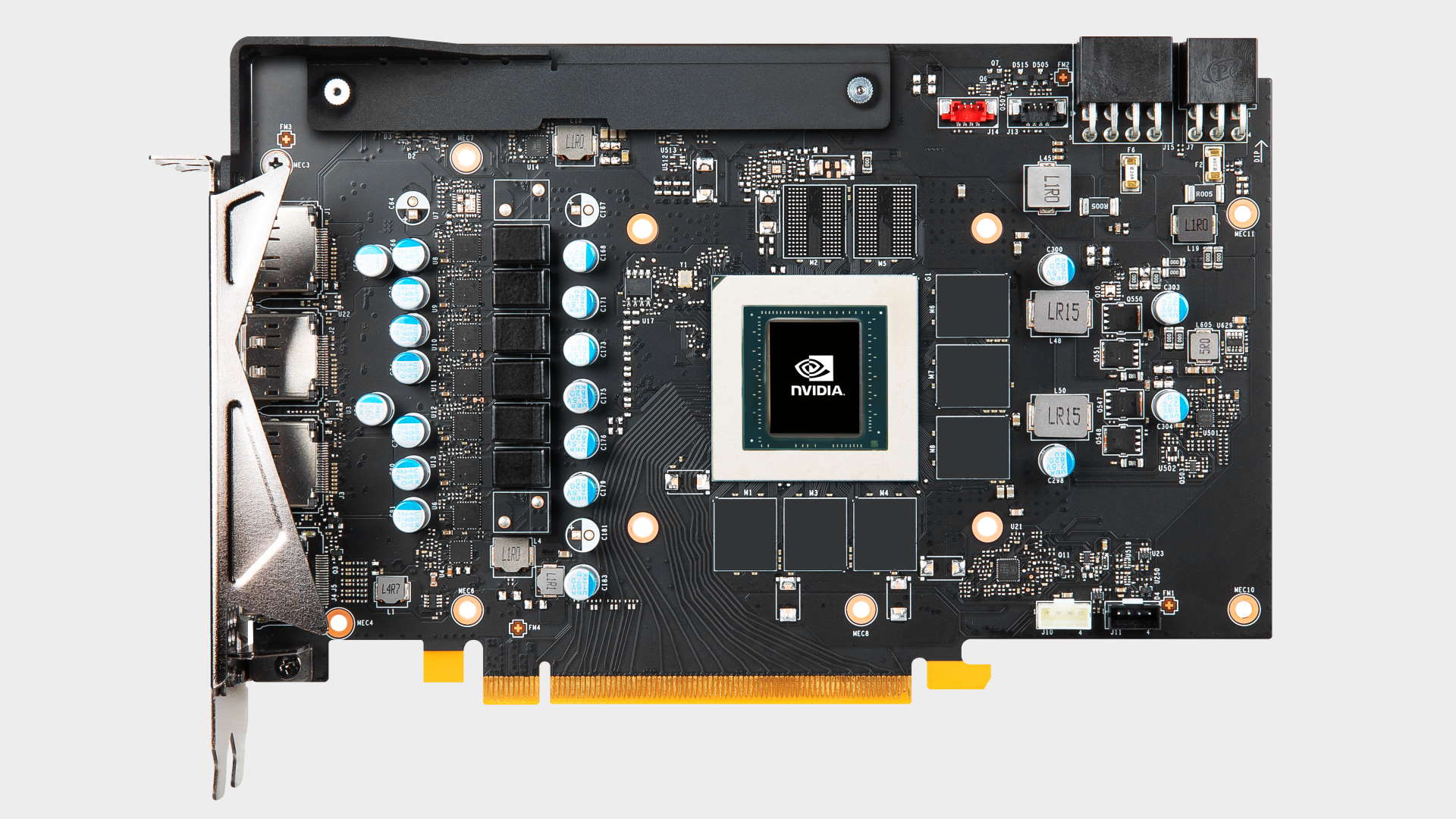
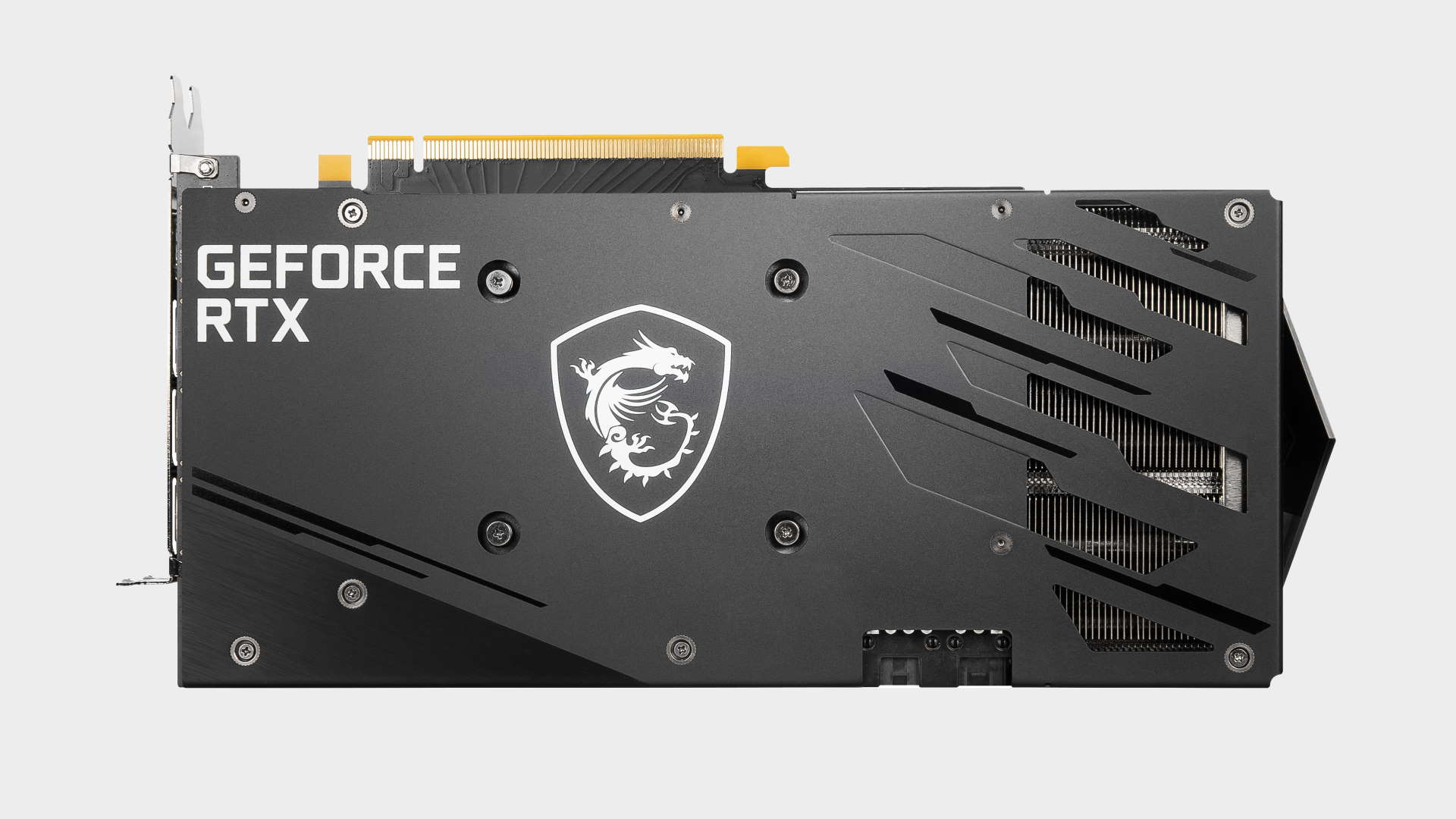
MSI usually rates very highly when it comes to its cooler designs. The RTX 3060 Gaming X is equipped with its latest Twin Frozr 8 dual fan cooler, while some manufacturers are promoting mid-range cards with very large triple fan coolers. You might as well just save your money and go for one of these more affordable dual fan versions. A cooler designed for a 350W+ RTX 3090 is overkill with a capital O.
This MSI card features a rather subtle RGB implementation, with just two small sections on the front of the card along with the MSI logo on the side. It omits the long RGB bar of the Trio version.
The Twin Frozr 8 cooler does its job with ease. We saw a load temp of just 63°C after about 10 minutes of 100% load. This kept the card boosting to very high levels, consistently above 1,900MHz, and it did so in relative silence. The sound of the AIO pump is still the dominant noise maker in my particular system.
1080p Gaming Performance
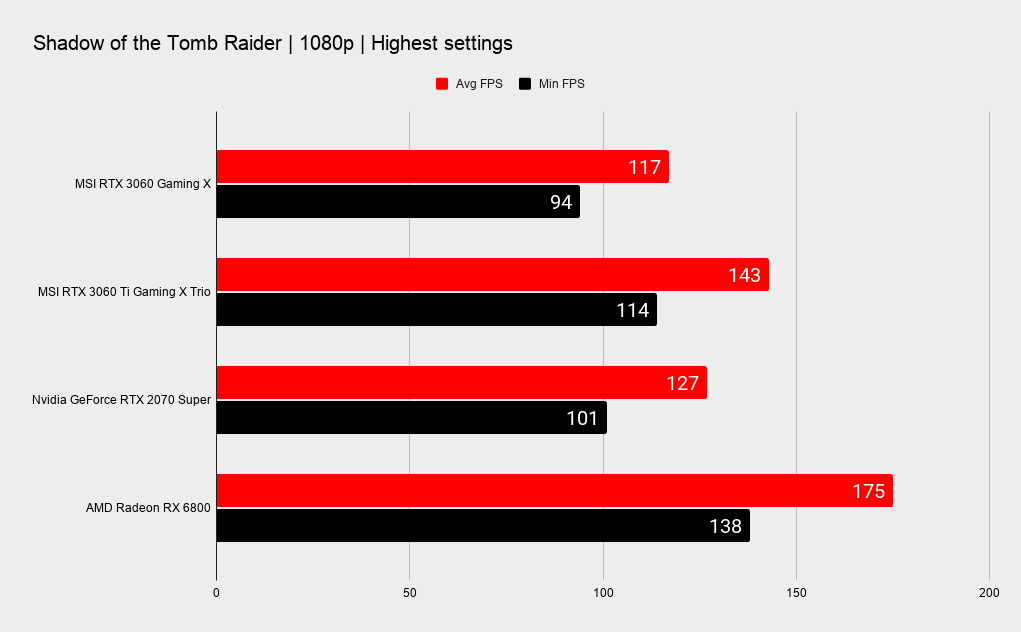
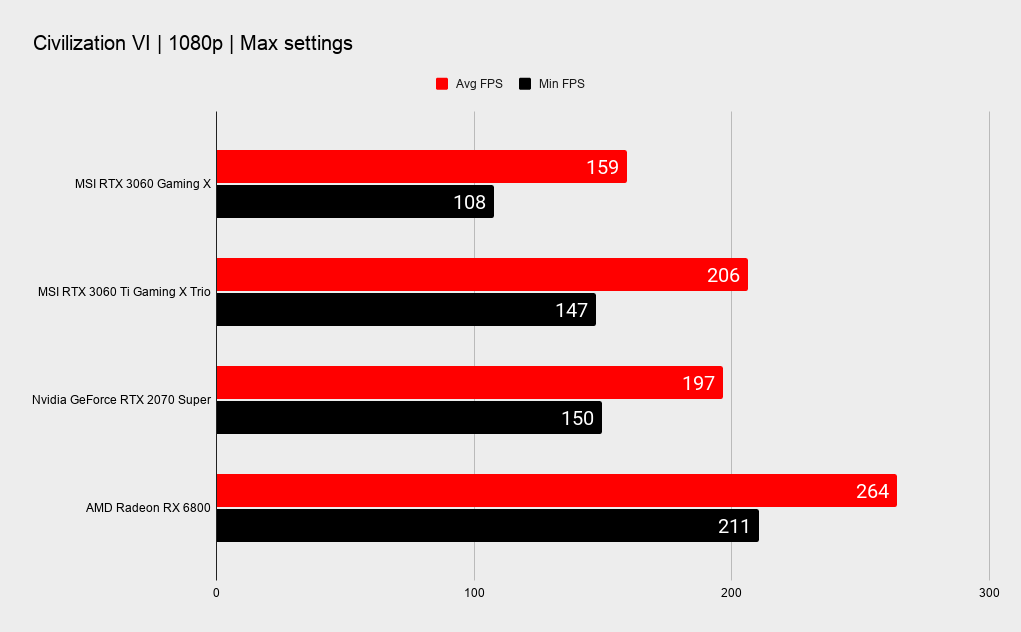
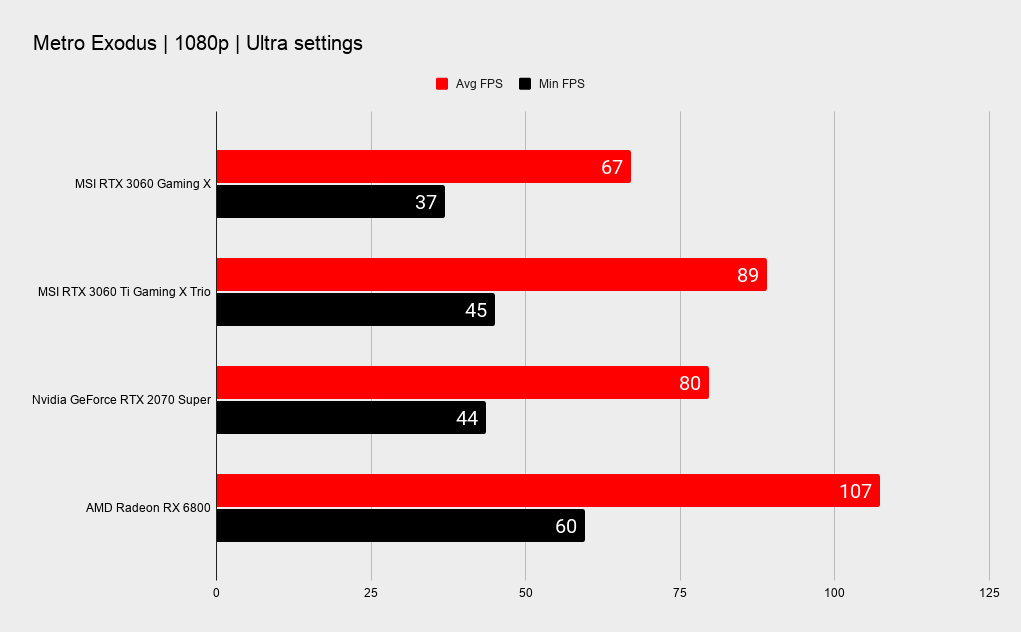
1440p Gaming Performance
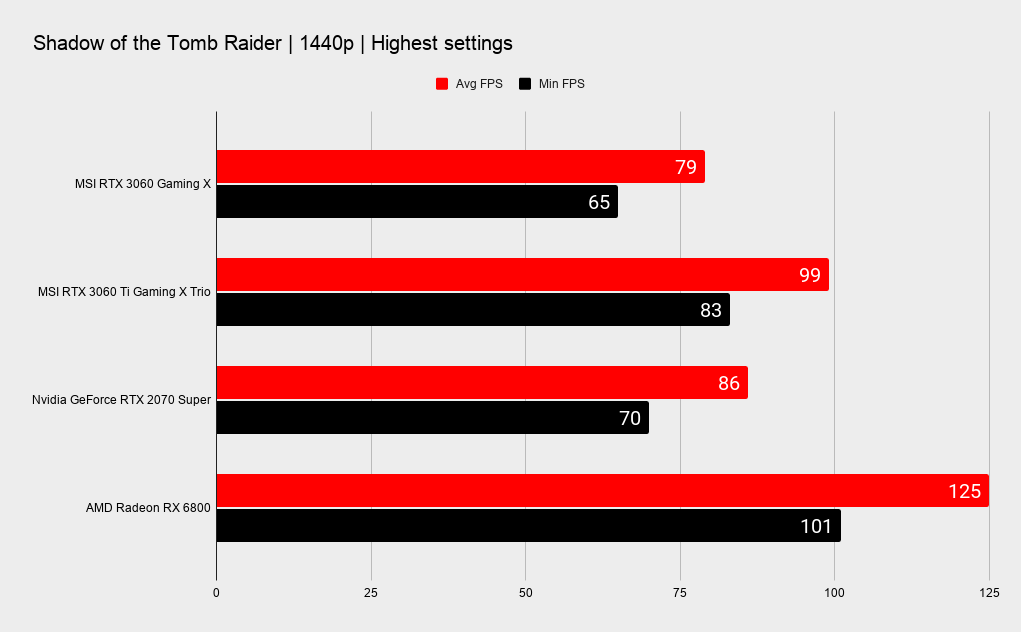
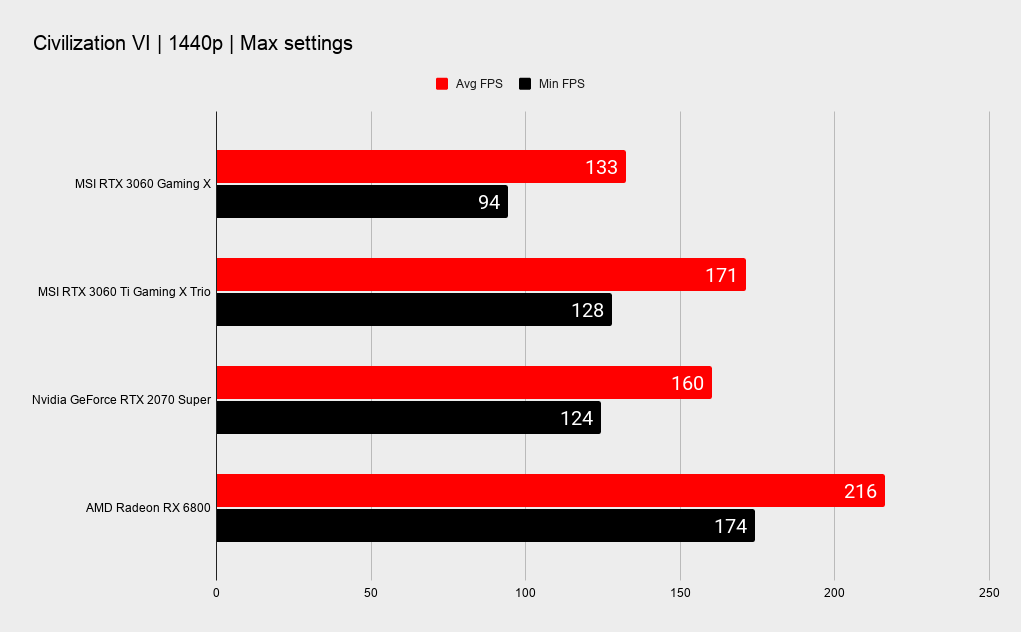
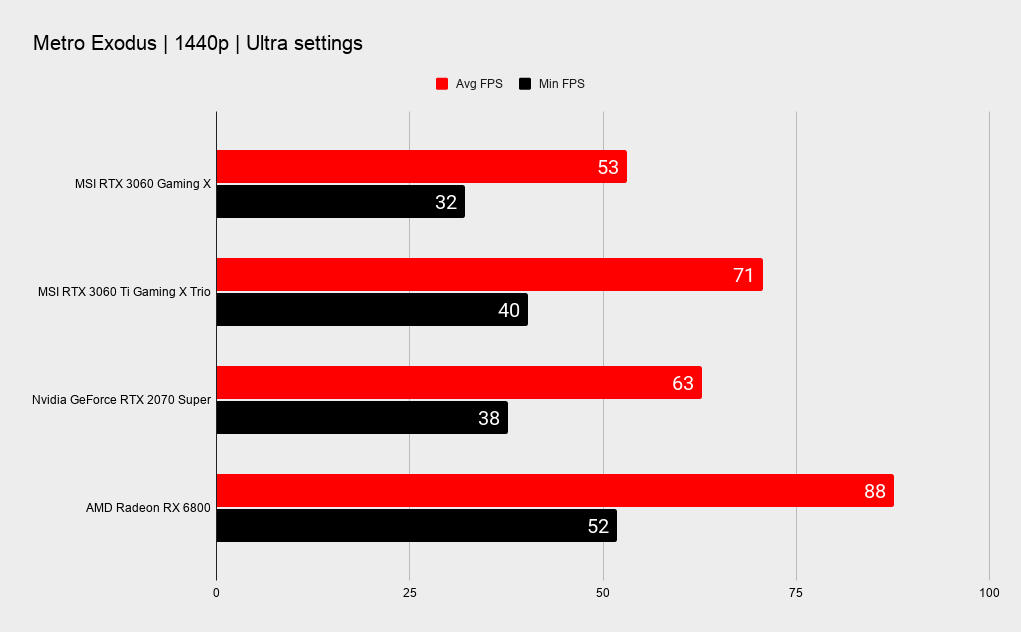
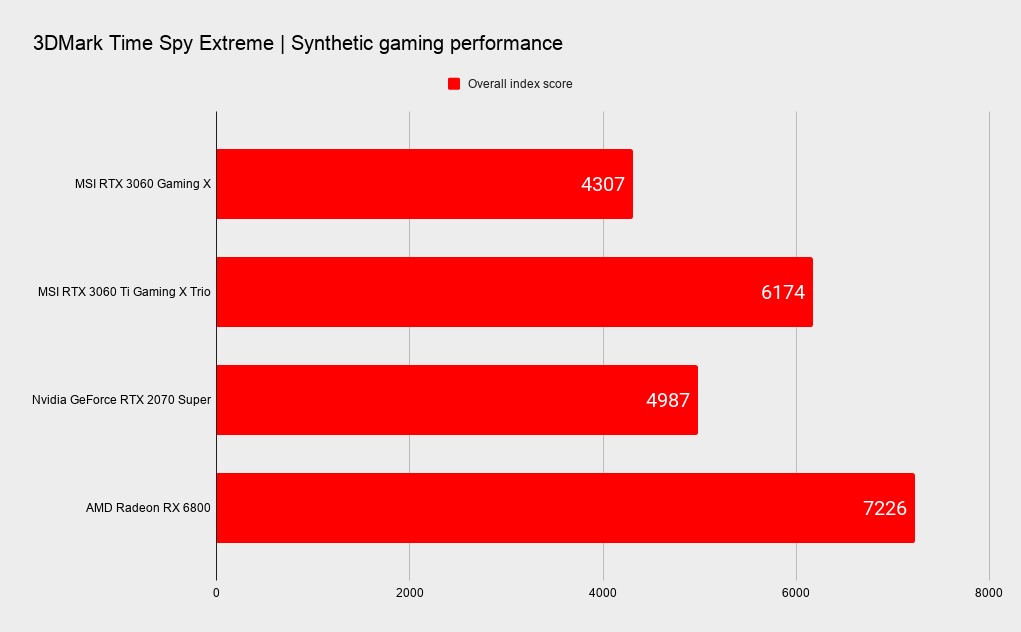
Thermal Performance

The overall gaming performance of the RTX 3060 is decent, even if it doesn’t thrill us like the other Ampere cards did. Like its big brothers, the RTX 3060 brings better ray tracing performance and superior technology support, including more advanced Tensor cores and an upgraded video engine.
We hoped to see something like RTX 2070 Super class performance, but it's not to be. In fact while the far stronger RTX 3060 Ti matches the 2080 Super, the RTX 3060 only just manages to beat the 2060 Super. As a result it's really best considered an upgrade for users of older generation cards.
That 12GB of VRAM is nice to have though. It’s enough for any game now and for the foreseeable future and its capable of perfectly smooth high detail 1080p gaming. It can happily run at 1440p if you dial back a few settings to keep above the 60fps threshold at all times. Perhaps Nvidia should have called it the RTX 2050 Ti, equipped it with 8GB and priced it at $250. In a market that’s not legless drunk, that would have made it a seriously compelling option.
Performance evaluating is always related to price though. The RTX 3060 is actually a capable card if its pricing ends up at a decent level. Don’t forget the increasingly desirable Nvidia RTX feature set including stronger ray tracing support, DLSS 2.0 and features like Nvidia’s Broadcast app and Reflex tech. In an alternate reality, it should be an affordable, capable, and feature rich midrange option.
The MSI RTX 3060 Gaming X did prove to be a capable overclocker, even with a restricting 105% power limit. We were able to run the card at a boost clock of between 2050 and 2070 MHz and memory at 17.6Gbps. Using Metro Exodus at 1080p with the Ultra preset as the benchmark, we saw an increase from the stock 67.1 FPS to 71.7 FPS, a decent 6.9% increase. That’s pretty good for a card that’s hard up against power limits.

The MSI RTX 3060 Gaming X is a great example of what a mid-range card needs to be. Such a card should not pretend to be an Nvidia RTX 3080. You could go for a premium RTX 3060, but at their prices you’re getting towards genuine RTX 3060 Ti territory. And I know which I’d choose.
The Twin Frozr 8 cooling easily tames the GA106 GPU, keeping it cool and quiet at all times which allows the card to perform at its best. The RRP of the RTX 3060 is $329, but that means nothing in the current climate. At the time of writing there wasn’t even an official RRP for the Gaming X, though of course you’d expect a reasonable price premium (in normal times).
While the RTX 3060 itself isn’t much of an upgrade for RTX 20 series users, if you’re coming from something older and want to jump on the ray tracing bandwagon, it will serve you well. But, if you can wait, you’re better off waiting until the pricing stabilizes. Whenever that may be…
Though the MSI Gaming X is an example of a mid-range card done right, a true verdict only applies once the market settles.

Chris' gaming experiences go back to the mid-nineties when he conned his parents into buying an 'educational PC' that was conveniently overpowered to play Doom and Tie Fighter. He developed a love of extreme overclocking that destroyed his savings despite the cheaper hardware on offer via his job at a PC store. To afford more LN2 he began moonlighting as a reviewer for VR-Zone before jumping the fence to work for MSI Australia. Since then, he's gone back to journalism, enthusiastically reviewing the latest and greatest components for PC & Tech Authority, PC Powerplay and currently Australian Personal Computer magazine and PC Gamer. Chris still puts far too many hours into Borderlands 3, always striving to become a more efficient killer.
